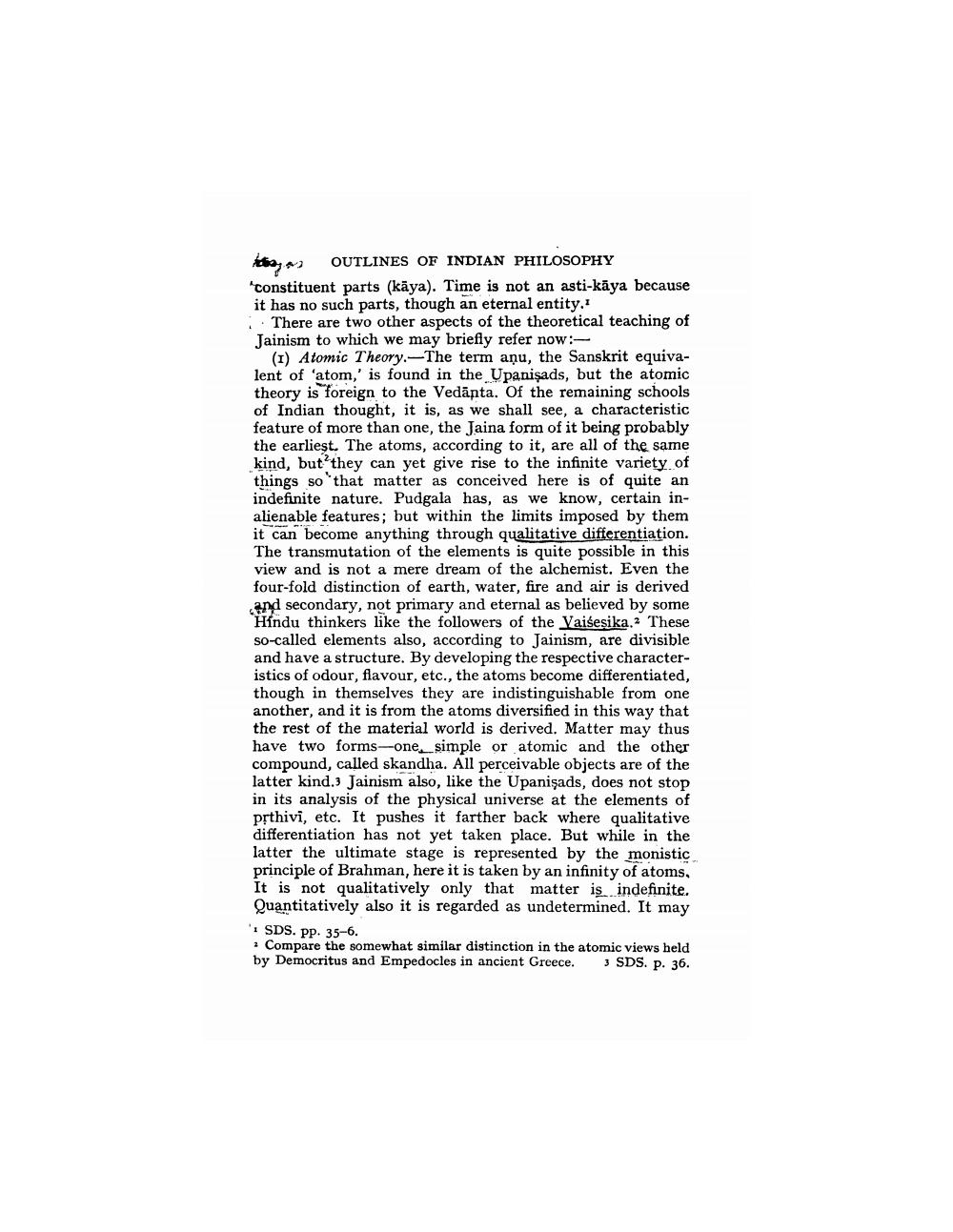________________
thay) OUTLINES OF INDIAN PHILOSOPHY constituent parts (kāya). Time is not an asti-kāya because it has no such parts, though an eternal entity,
There are two other aspects of the theoretical teaching of Jainism to which we may briefly refer now:
(1) Atomic Theory.-The term anu, the Sanskrit equivalent of 'atom,' is found in the Upanişads, but the atomic theory is foreign to the Vedānta. Of the remaining schools of Indian thought, it is, as we shall see, a characteristic feature of more than one, the Jaina form of it being probably the earliest. The atoms, according to it, are all of the same kind, but they can yet give rise to the infinite variety of things so that matter as conceived here is of quite an indefinite nature. Pudgala has, as we know, certain inalienable features; but within the limits imposed by them it can become anything through qualitative differentiation. The transmutation of the elements is quite possible in this view and is not a mere dream of the alchemist. Even the four-fold distinction of earth, water, fire and air is derived and secondary, not primary and eternal as believed by some Hindu thinkers like the followers of the Vai esika.2 These so-called elements also, according to Jainism, are divisible and have a structure. By developing the respective characteristics of odour, flavour, etc., the atoms become differentiated, though in themselves they are indistinguishable from one another, and it is from the atoms diversified in this way that the rest of the material world is derived. Matter may thus have two forms-one simple or atomic and the other compound, called skandha. All perceivable objects are of the latter kind. Jainism also, like the Upanişads, does not stop in its analysis of the physical universe at the elements of prthivi, etc. It pushes it farther back where qualitative differentiation has not yet taken place. But while in the latter the ultimate stage is represented by the monistic principle of Brahman, here it is taken by an infinity of atoms, It is not qualitatively only that matter is indefinite. Quantitatively also it is regarded as undetermined. It may · SDS. PP. 35-6. 1 Compare the somewhat similar distinction in the atomic views held by Democritus and Empedocles in ancient Greece. SDS. p. 36.




